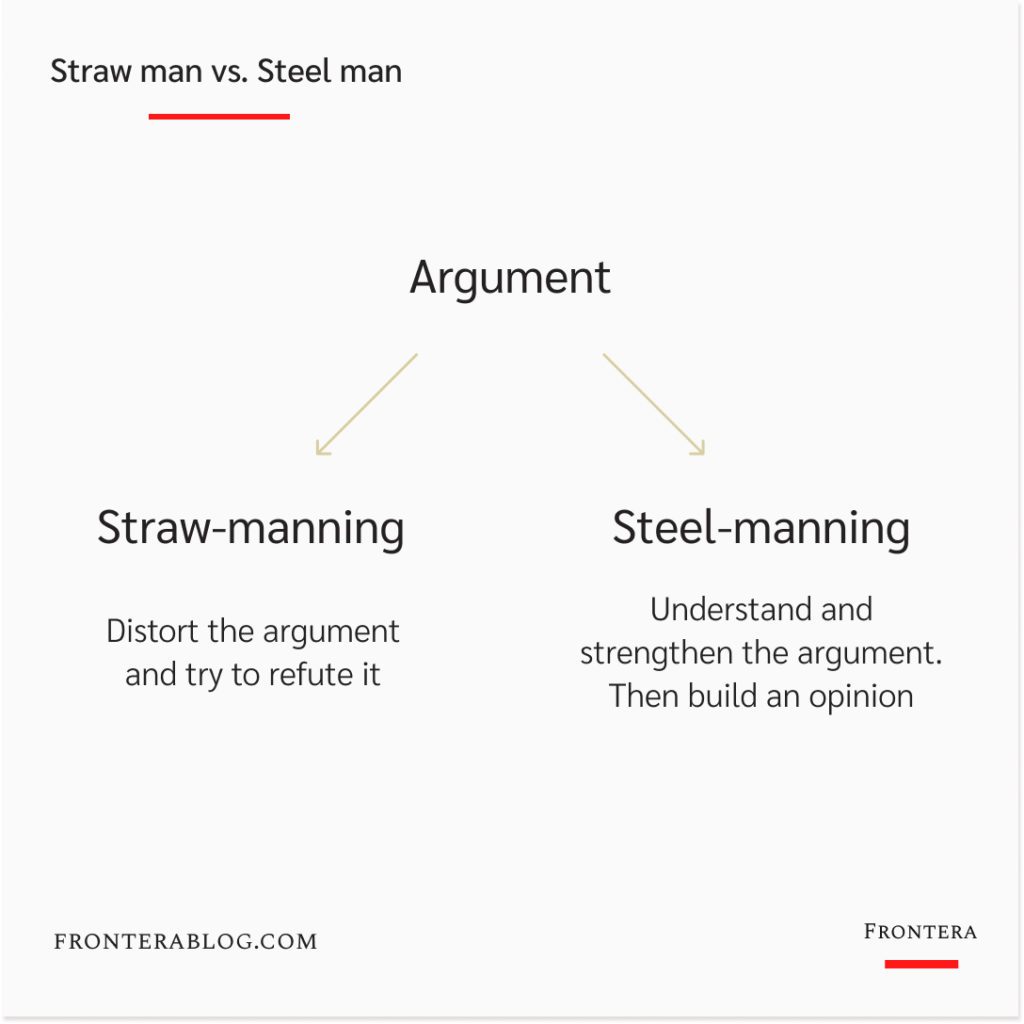Steel-manning is a mental model where you strengthen opposing arguments to understand them better, so you can make the right decisions.
Mike presented his project to Jane, the head of marketing.
He had prepared for weeks for this presentation.
User feedback, technical details, strategy…
He had a solid plan for a new product.
And he already had buy-in from his own division, engineering.
But the project would require significant investment; so he also needed Jane’s approval to proceed.
At the end of the presentation, Mike was happy with his delivery.
Expecting a positive answer, he asked Jane: “What do you think?”
First, Jane gave a few compliments on Mike’s presentation and the ambitious idea.
Then she said: “But what you propose is to reduce our focus on existing products, we can’t do that.”
Straw-manning vs. Steel-manning
In zero-sum games —like office politics— winning arguments is vital.
Because the purpose is usually gaining more power.
Not finding the best path forward.
So some people start using different tactics to prevail, like straw-manning.
They distort an argument and attack that “straw man” version to refute it.
Jane thought a big project under engineering would mean less budget for her department.
So she straw-manned Mike’s idea to kill it.
You have probably seen similar situations at work or in your personal life.
But straw-manning also has its opposite, and that’s called steel-manning.
Instead of distorting an argument, you strengthen it as if it’s your own idea.
And only then you build your opinion about the topic.

Two ways steel-manning can help you succeed:
1. Understand & persuade
When you try to build the most robust version of the opposite idea, you are not defensive anymore.
You have an open mind.
So you can see the thought process behind it, the weak links, and the solid points.
If Jane had steel-manned Mike’s idea, she might have concluded that the project was a good idea for the company (hence, also for her department and career) over the long term.
Or she could still disagree, but with better counter-arguments after showing that she understands the idea well.
And that would only arouse respect and persuade the other party, even when she disagrees.
2. Find the right path
Imagine you have to make a major decision.
Starting your own business or staying at your job.
Buying a house or investing in the stock market.
First, you’ll likely want to choose one option more than the other.
So without knowing, you might strawman the other option in your mind to justify the one you want.
But is it really the right option for you?
To assess it better, steel man all options.
Make better arguments to see why each option can be the best one.
Only then, can you see the whole picture without any bias and make a good decision.
Enjoyed this article?
Then you’ll love the How Brands Win Newsletter.
Get the “7 Positioning Sins That Cost B2B Brands Millions” guide when you join. It’s free.
